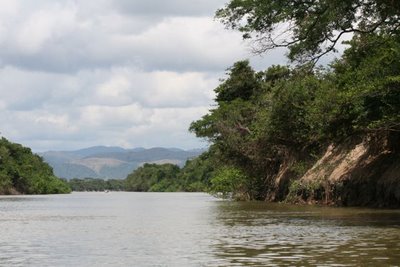 Upon leaving the magical Kaeiteur Falls National Park, we re-boarded the tiny white airplane and set off for Karanambu, a private camp deep in the trackless interior of Guyana. Access as far as I know is only by air or boat. We were picked up in some rickety four-wheel-drive vehicles and taken to the camp, with just enough time to unload our backpacks and bags, and jump back into a couple of boats. Our goal was to reach a stand of the world's largest water lily, Victoria regia, in time to see their flowers open at nightfall.
Upon leaving the magical Kaeiteur Falls National Park, we re-boarded the tiny white airplane and set off for Karanambu, a private camp deep in the trackless interior of Guyana. Access as far as I know is only by air or boat. We were picked up in some rickety four-wheel-drive vehicles and taken to the camp, with just enough time to unload our backpacks and bags, and jump back into a couple of boats. Our goal was to reach a stand of the world's largest water lily, Victoria regia, in time to see their flowers open at nightfall.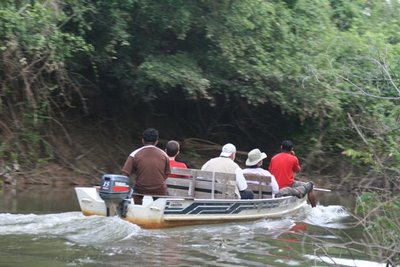
There were tons of birds on the way to the lilies. The water was low and the fish were concentrated. Anything that ate fish was abundant. Here's a little blue heron, looking beautiful in the heat.
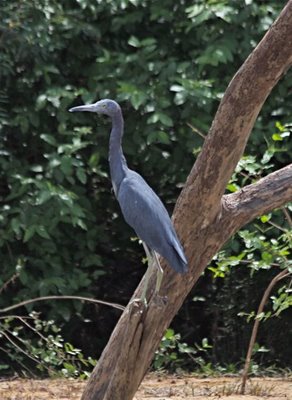 White-necked or cocoi herons are abundant along this stretch of river. It's a beautiful bird, reminscent of the great blue, but a bit more striking.
White-necked or cocoi herons are abundant along this stretch of river. It's a beautiful bird, reminscent of the great blue, but a bit more striking. 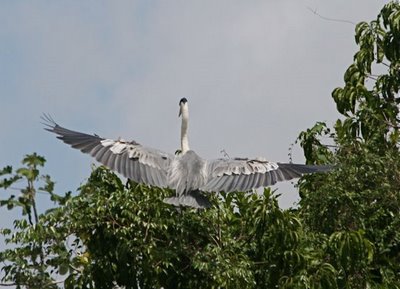 That pretty white neck really sticks out.
That pretty white neck really sticks out.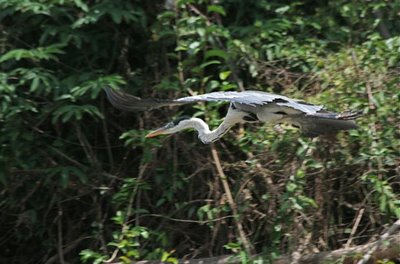 But the most beautiful heron, I think, is the capped heron, or the Blue Eyed Banana Heron, as I like to call it. Oh, that blue orbital skin!
But the most beautiful heron, I think, is the capped heron, or the Blue Eyed Banana Heron, as I like to call it. Oh, that blue orbital skin!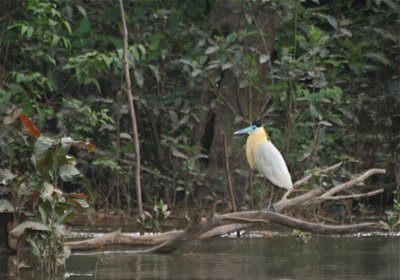
That banana-yellow neck! Dig that crazy plume coming off the head.
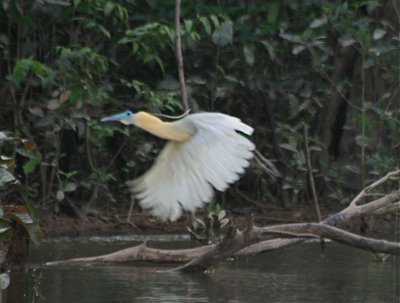
Hiding in the trees.
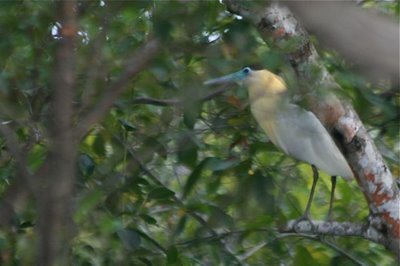
Amazon kingfishers are a large, hearty cousin to our tiny green kingfisher. They can be differentiated by their size and their heavy bills. What a gorgeously proportioned bird!
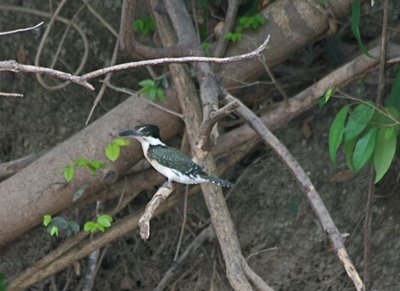 This white-breasted bird is a female. Her mate wears rufous.
This white-breasted bird is a female. Her mate wears rufous.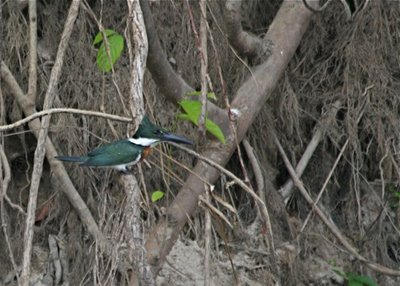
Dig that Woody Woodpecker crest! I would hate to be a minnow on the bidness end of that sledgehammer bill.
As night approached we spotted the elusive agami heron, a contender in my eyes for Most Beautiful Heron in the World, matched only by the capped heron. Unfortunately, I got only the briefest and worst of shots, as the light had failed.
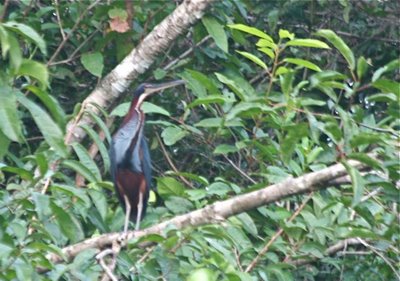 But you can see its rich maroon-chestnut body, its teal green wings, and the mysterious blue filagree on its breast. I believe the agami has the longest bill in proportion to its body of any heron. It's a gracile, secretive beauty, and we were thrilled to see several on this trip. The agami is a quest bird for many. They need but come to Karanambu.
But you can see its rich maroon-chestnut body, its teal green wings, and the mysterious blue filagree on its breast. I believe the agami has the longest bill in proportion to its body of any heron. It's a gracile, secretive beauty, and we were thrilled to see several on this trip. The agami is a quest bird for many. They need but come to Karanambu.Daylight was drawing to a close, and it was getting on time to see the world's largest lily in full bloom.






12 comments:
"Blue-eyed Banana Heron!" -- gotta LUV it; great name for a great bird!!
Of course we need to wait for the largest lily in the world. That's OK, suspense is good.
I can dig that Blue Eyed Banana Heron! My fave on this post.
Oh, such lovely derivatives of Florida friends. What interesting looking herons!
PS Judy Rankin DeMerona lives near Lyon in an old family stone chateau. I've emailed her....
The herons are stunning but I'm partial to Kingfishers and this little guy, with his rufous breast, is wonderful. The lily...soon, I hope.
They're all so beautiful. I do like that kingfisher best though. Always glad to see ours.
Looking forward to the rest of this journey.
What a cliffanger! You got some amazing heron photos there. I can't wait to see the giant water lilies.
I just discovered your blog- thanks for sharing your artwork, adventures and observations. I'll definitely come back.
You are starting to write like Dan Brown - each chapter makes me beg for the next. The herons are gorgeous, but I'm pumped to see the world's largest lily!
I'm a huge fan of herons and am so pleased to see the pics of these exotic varieties. Where I live (southern Ontario) I've only ever seen the Great Blue,the Green and Night herons.
Thanks for the treat and happy new year.
I think that it is absolutely fabulous that I get to share your trip to South America. Thanks so much!
Absolutely stunning herons! I know what a treat it must have been to see them all!
Marie
This is totally the best blog ever.
Post a Comment